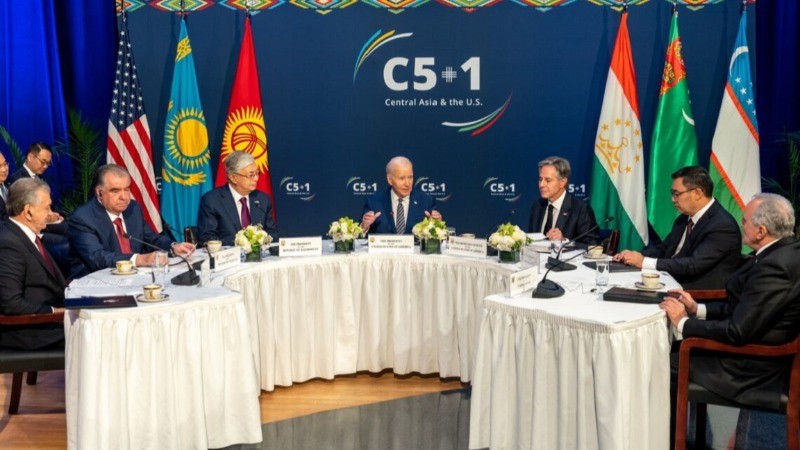
As the US presidential election compaign is picking up momentum, the world is watching closely to see how the results will affect global politics, economics, and ongoing conflicts, particularly in Ukraine and Israel. With Joe Biden's presidency seen as weakened, the competition between Donald Trump and Kamala Harris has raised questions about future US policies and their impact on Central Asia.
Countries in Central Asia are particularly attentive to the election results, recognizing how global developments may shape their future. During his previous term, Trump engaged with Central Asian leaders, while Harris lacks this experience. The ongoing ‘5+1’ contact format, initiated in the early 2000s by then-President George Bush, has facilitated discussions with these leaders about the legacy of the Soviet Union, especially in relation to Afghanistan and the aftermath of the 2001 terrorist attacks.
Kazakh President Nursultan Nazarbaev, who met with five US presidents during his lengthy tenure, saw Barack Obama formalize the contact format that has expanded to other international levels. His successor, Kasym-Žomart Tokaev, has visited the US twice, fostering discussions on cooperation in investment, trade, and artificial intelligence. This engagement has led to significant agreements, making Washington Kazakhstan's second-largest economic partner after Moscow.
In 2023, all five Central Asian presidents met with President Biden, addressing the repercussions of sanctions on Russia and efforts to navigate them through Central Asia. The White House stated that energy security was the main focus of this meeting, although human rights issues were not addressed, which many observers had hoped for. Biden described the meeting as a “historic moment” and advocated for more regular and constructive discussions.
Catherine Putz, a Eurasia expert and editor of The Diplomat, notes that neither Harris nor Trump has indicated plans to continue the 5+1 summits. She suggests that Harris might be less inclined to renew such initiatives due to her focus on human rights, an area that Central Asian leaders prefer to discuss within their own context.
Kyrgyz scholar Ališer Khamidov also questions the effectiveness of the platform and doubts its future development, regardless of who occupies the White House after November 5. Meanwhile, Russia continues to assert its influence in the region, with frequent visits from high-ranking officials, including President Vladimir Putin and Foreign Minister Sergei Lavrov. Central Asian leaders maintain strong ties with Moscow, engaging with the Eurasian Economic Union and the CSTO military alliance.
The US recognizes that it faces challenges in competing with Russia for influence in Central Asia. Khamidov suggests that bilateral meetings with regional partners could yield more productive outcomes. As the election nears, there is a keen interest in Harris and Trump's positions on the Ukraine conflict. Harris has expressed a willingness to support Ukraine against Russian aggression, while Trump has repeatedly claimed he could end the war in just 24 hours through negotiations.
What is C5+1
The C5+1 is a diplomatic platform designed to foster collaboration and dialogue between the United States and five Central Asian nations: Kazakhstan, Kyrgyzstan, Tajikistan, Turkmenistan, and Uzbekistan. Established to enhance political and economic ties, the primary objective of C5+1 is to improve the bilateral relationship between the United States and these Central Asian countries while also promoting cooperation among the nations themselves. Through regular meetings and discussions, the C5+1 seeks to address shared challenges such as security, trade, energy, and environmental issues. This platform provides a unique opportunity for the U.S. to engage with Central Asia, a region that plays a critical role in global geopolitics, particularly in the context of its relationships with neighboring powers like Russia and China. By facilitating dialogue and collaboration, C5+1 aims to create a more stable and prosperous Central Asia, enhancing regional security and economic development while reinforcing U.S. interests in the area.
Read More....